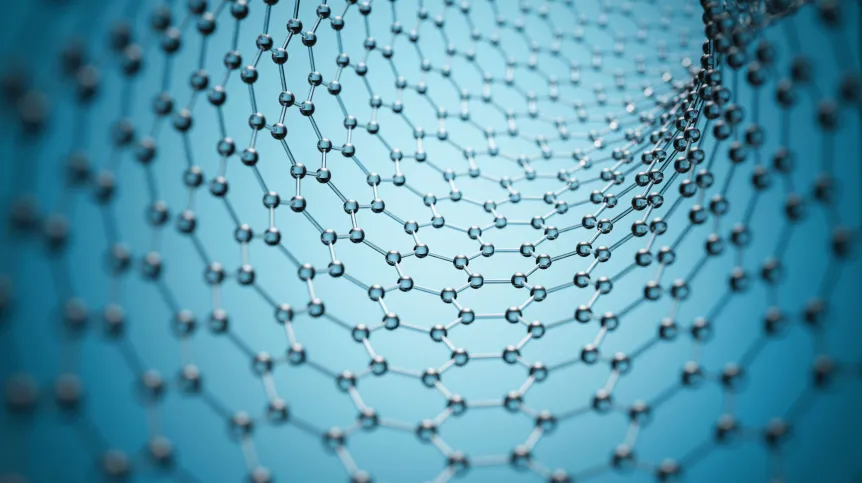
Accelerating the action of polymers that wrap around a selected type of nanotubes so that they can be isolated for future applications was described by scientists from the Silesian University of Technology. The team leader, Professor Dawid Janas, compares this process to 'feeding a polymer boa snake, the constrictor of nanotubes.’
According to the expert, the 'full snake' method will accelerate the use of nanotubes in everyday life. The co-authors of the paper in the Materials Horizons are: Dominik Just, Andrzej Dzienia, Karolina Milowska (Cambridge University), Anna Mielańczyk and Dawid Janas.
A CHALLENGE FOR THE MOST EXPENSIVE MICROSCOPES
Scientists working in Professor Janas' laboratory at the Silesian University of Technology deal with the purification of mixtures of single-wall carbon nanotubes, among other things. As the scientist tell PAP, these materials have enormous potential, but, unfortunately, they are still obtained in the form of mixtures of various types. Mixtures are not suitable for breakthrough applications. Only specific nanotubes with precisely defined structures can be used in medical diagnostics or photovoltaics.
'To change this state of affairs, it is necessary to isolate selected types of nanotubes with precisely defined properties, tailored to the expected applications. The problem is that purifying this material is a big challenge, because the nanotubes that make up the mixture are very small (approx. 50,000 times smaller than a human hair) and differ only slightly from each other. The diameters of two species of nanotubes are often separated by 0.1 nm or less, which is difficult to observe even with the most expensive electron microscopes,’ says Professor Janas.
THE 'BOA SNAKE' METHOD
In recent years, researchers have made great progress in this area, developing many ways to isolate several types of nanotubes. The conjugated polymers they synthesized turned out to be particularly effective.
'These polymers are able to wrap like a boa snake only around one type of nanotubes in the solution. This makes it possible to recover them from the mixture,’ says Professor Janas. 'Unfortunately, so far our polymer snake has not been able to compromise. It would either wrap itself around a small amount of one type of nanotubes, yielding a pure product with a low concentration, or it would wrap around different types of nanotubes, generating an appropriately concentrated, but poor quality product'.
POLYMERS ARE SLOW... BECAUSE THEY ARE HUNGRY?
Scientists saw the problem as the slow action of polymers. 'Just like a boa snake, whose maximum movement speed is only about 1/3 of a human's walking speed, our polymers are quite sluggish. Their large molecular size means that even if they prefer the selected type of nanotubes, they wrap around them in solution very slowly. As a result, extraction of nanotubes with a polymer produces an unsatisfactory amount of pure product. We needed to find a way to breathe life into our polymer boa, to make it less phlegmatic,’ Janas says.
'Feeding' it with low molecular weight compounds, such as 2,5-dibromothiophene, turned out to be the solution. 'Adding them to the solution caused the polymer reptile to wrap around the desired type of nanotubes much more strongly and faster, which was confirmed by the results of computer modelling. As a result, we increased the number of nanotubes obtained tenfold, and they were all of only one, desired type,’ Professor Janas adds. In his opinion, this discovery brings us much closer to using nanotubes in everyday life.
The research was financed with funds from the Polish National Science Centre and the National Agency for Academic Exchange NAWA.
PAP - Science in Poland, Karolina Duszczyk
kol/ bar/ kap/
tr. RL













